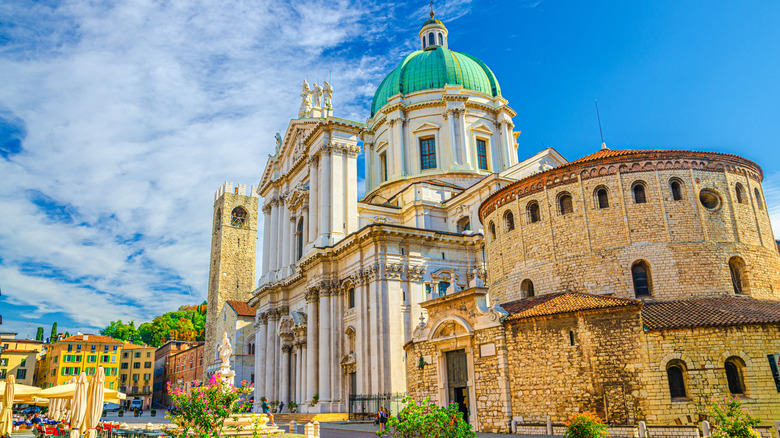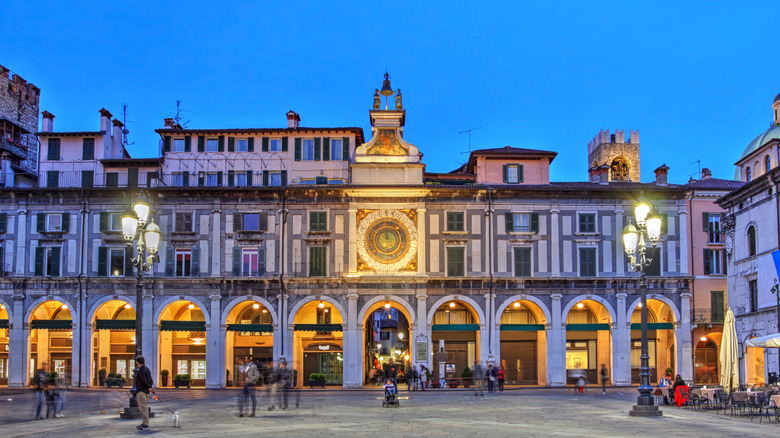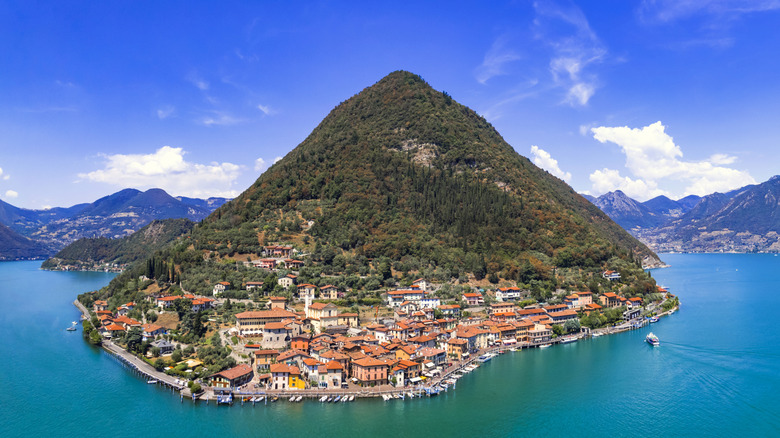Between Milan And Venice Is Italy's Underrated City With Beautiful, Historic Ruins And Stunning Architecture
Ask most travelers about Northern Italy, and they'll reel off the classics — Milan for alta moda, Venice for canals (here are the most underrated and most intriguing parts of the city, according to Rick Steves), and Verona for Juliet's legendary balcony. But mention Brescia, and chances are you'll get a blank stare. This is quite a pity, considering that this city of nearly 200,000 people boasts one of the richest histories in the region.
Brescia is nicknamed La Leonessa d'Italia (literally, "the Lioness of Italy") — a title popularized by Italy's first Nobel laureate in Literature, Giosuè Carducci, to honor the city's courageous stand against Austrian troops during the Ten Days of Brescia in 1849. This Lombard city truly feels like an open-air museum. From the splendidly maintained Roman Capitolium and theater — part of a UNESCO World Heritage site dating back to a time when the city was known as Brixia — you can walk to the medieval Brescia Castle, strategically built atop Cidneo hill. This castle's nickname, Falcone d'Italia, was inspired by yet another animal — a falcon — as it looms over the landscape as a falcon would do in flight. Then there are the Renaissance piazzas lined with elegant palazzi and two cathedrals, one old and one new, facing each other in the same square.
And the best part? Brescia still feels refreshingly local. In the city's charming trattorie, you can savor traditional dishes like casoncelli, stuffed egg pasta filled with aged cheese, breadcrumbs, herbs, and, in many modern versions, meat, typically served with melted butter, sage leaves, and an additional sprinkle of cheese. For an even heartier dish, spiedo bresciano features skewered meats such as pork, chicken, and rabbit slowly roasted over a spit and basted with butter. In addition, you can sip world-class Franciacorta sparkling wine from vineyards located just minutes away, or hop on a short train to Lake Garda and visit the incredibly well-preserved Scaligero Castle in Sirmione.
Walking around Brescia
Brescia is a city made for strolling: nearly everything worth seeing is within easy walking distance. Start with Palazzo della Loggia, with its Botticino marble exterior and richly adorned arches and arcades, bearing the unmistakable signature of Andrea Palladio– the legendary architect of the Venetian Republic. The palace has been, and still is today, the heart of the city's government. Turn your gaze to the opposite side of the piazza, and you will find the Torretta dell'Orologio ("bell tower"), boasting a mid-16th-century astronomical clock with two copper matti delle ore (literally, "madmen of the hours"), figures who have struck the hours for nearly five centuries.
Just a short 3-minute walk away lies Piazza della Vittoria, completed in 1932 during Mussolini's regime. Its rationalist layout, stark travertine facades, and the almost 60-meter Torre della Rivoluzione make it one of the clearest illustrations of Fascist-era urban planning in Italy. Continue your stroll, and you will arrive at Piazza Paolo VI, the iconic square with the two cathedrals. The Duomo Vecchio, or Old Cathedral, is an 11th-century Romanesque rotonda — one of the few of its kind — while opposite it rises the Duomo Nuovo, a Baroque giant whose construction spanned over two centuries. Its dome, at 80 meters high (around 260 feet), earns the bronze medal for the tallest in the country.
In a little more than half a mile (1 kilometer), the UNESCO corridor connects the Capitolium Temple and Roman theater to the enormous Santa Giulia Museum, housed in a former Benedictine convent, with pieces spanning nearly six millennia of history. If Italian masters of the Renaissance and Baroque are your forte, Pinacoteca Tosio Martinengo is the place for you — here you will find works by Raphael, Antonio Canova, Francesco Hayez, Lorenzo Lotto, and local painters such as Alessandro Bonvicino (also known as Moretto) and Giovanni Girolamo Savoldo.
How to get to Brescia and what to see in the surrounding area
Brescia is remarkably easy to reach. It is situated roughly 65 miles (100 kilometers) east of Milan and 112 miles (180 kilometers) west of Venice and is well connected to both cities by frequent trains. International travelers have several convenient airport arrival and departure options: Orio al Serio (BGY, Bergamo) is about 40 minutes away by car, Milan Linate (LIN) around an hour, Verona Villafranca (VRN) 45 minutes, and Milan Malpensa (MXP) — the region's largest airport with the highest number of long-haul and international flights — is roughly 90 minutes from Brescia.
Renting a car is your golden ticket for turning this small city into a clever pit stop on a Northern Italy road trip, which would, of course, also include a visit to the so-called Lake District, hailed by Rick Steves as "heaven-sent" for any nature lover. Head north from Brescia and you'll stumble into Lake Iseo. Less polished than Como and less crowded than Garda, it features medieval tower-houses and defensive walls in the town of Lovere as well as the European continent's biggest island set within a lake, Monte Isola. Fun fact: In 2016, Christo's "Floating Piers" art installation using temporary piers turned the lake into a series of golden walkways, drawing visitors from across the globe to literally walk on water.
Drive east from Brescia for about 27 miles (44 kilometers), and you'll reach Lake Garda, the Bel Paese's largest lake. Lemon houses cling to terraced hillsides in Limone del Garda, while fairy-tale castles guard waterfront towns like Sirmione, famous for its Roman villa ruins, and Malcesine, where a cable car lifts you to Monte Baldo for unparalleled views of the surrounding mountains. In addition, the town of Riva del Garda has always been a playground for poets and aristocrats – Johann Wolfgang von Goethe, D. H. Lawrence, and Franz Kafka all passed through — but today the area caters just as much to hikers and windsurfers.


